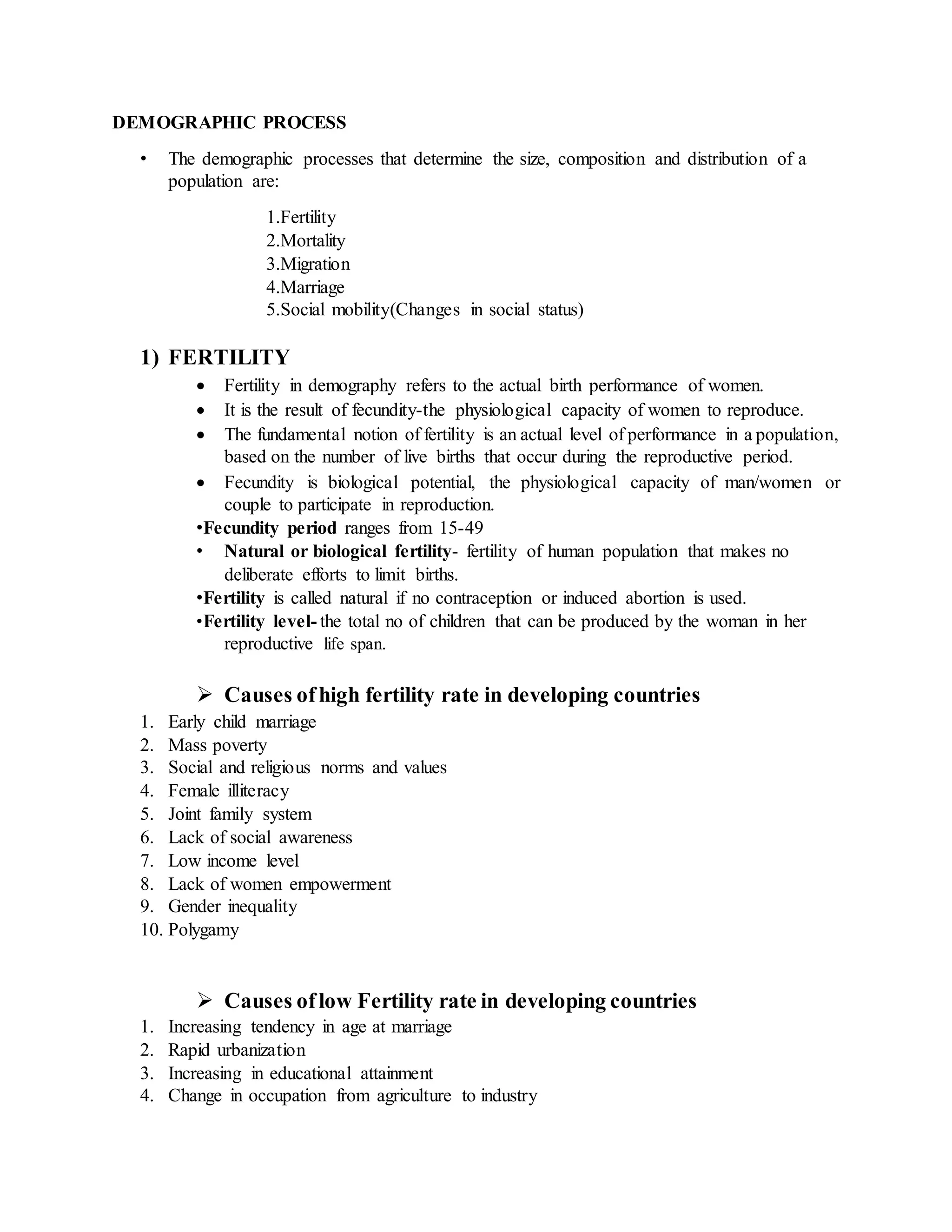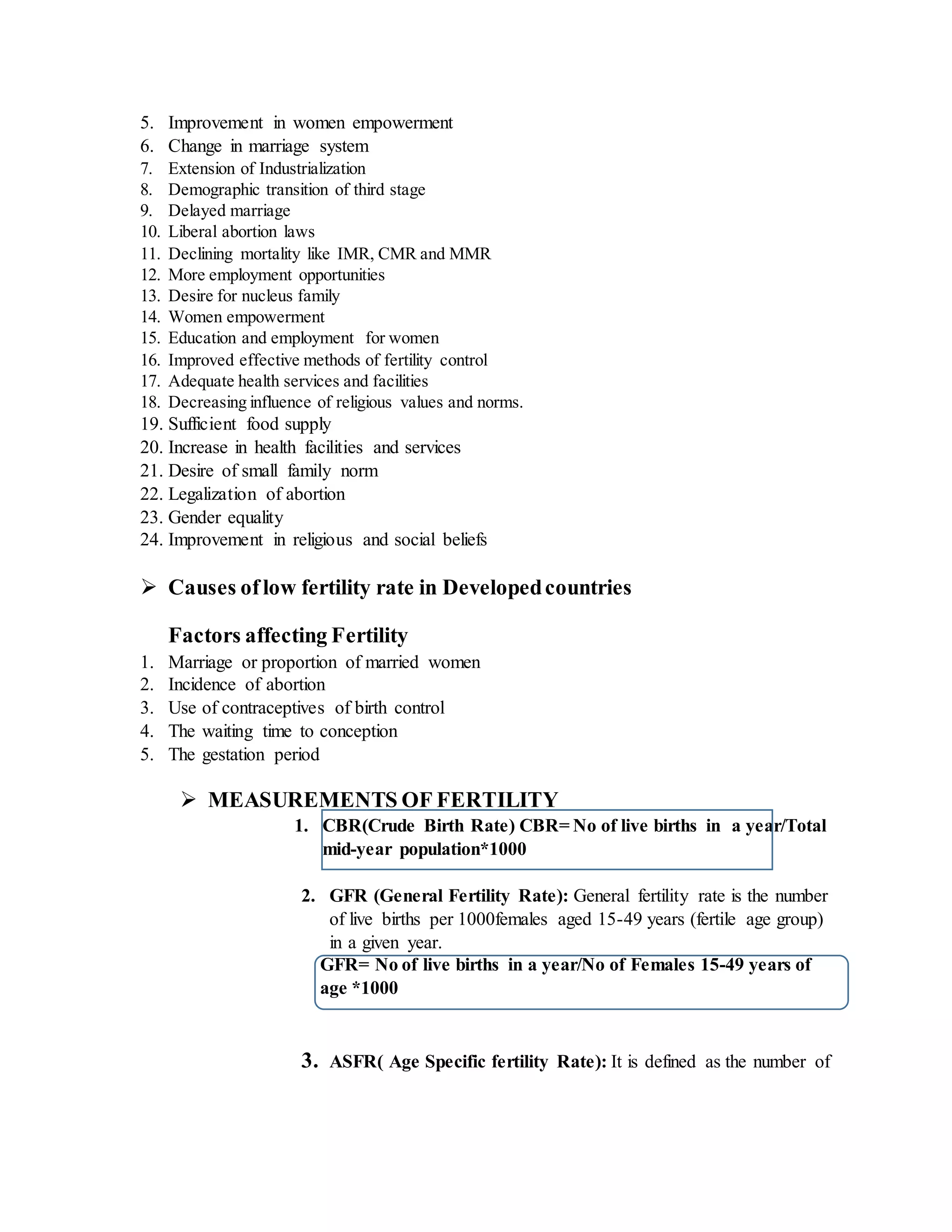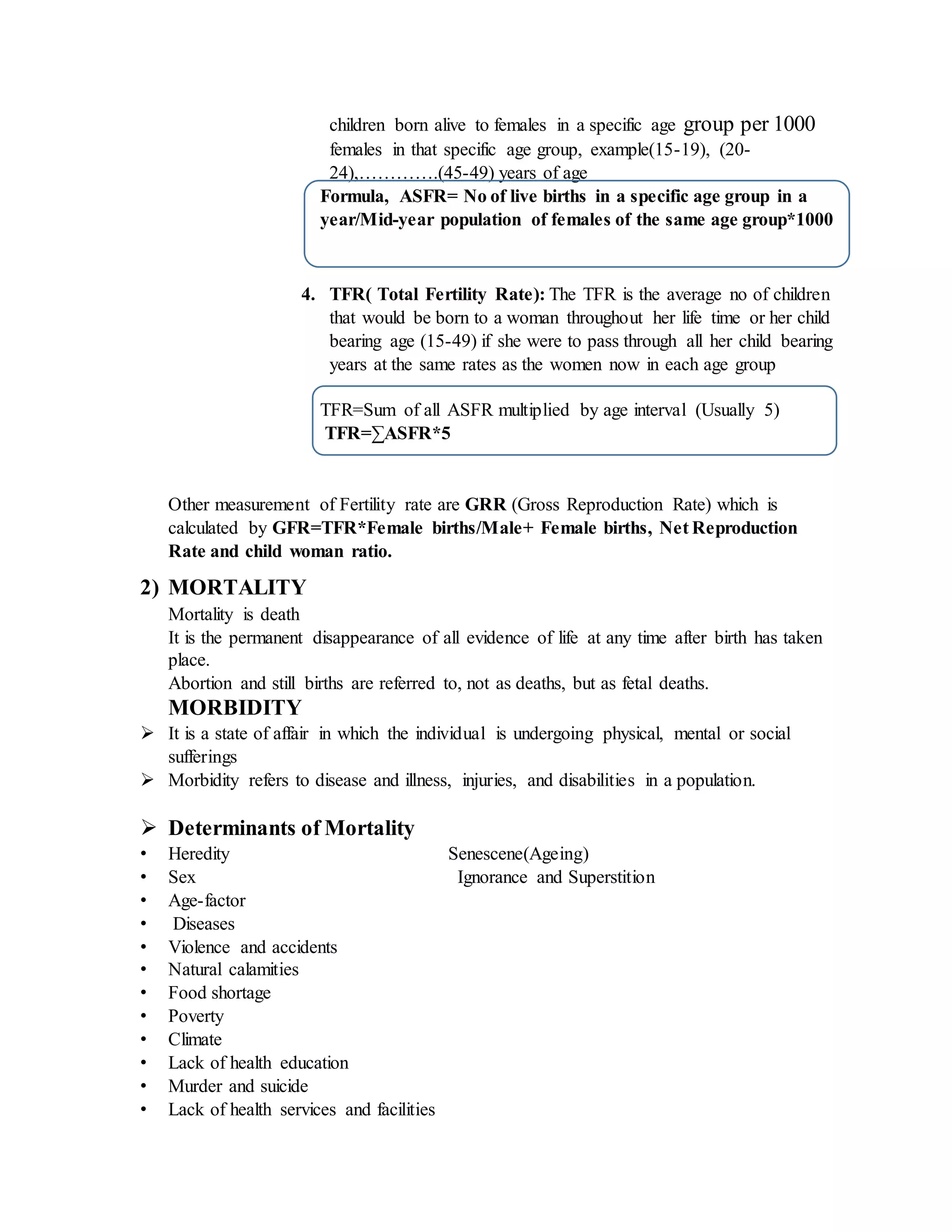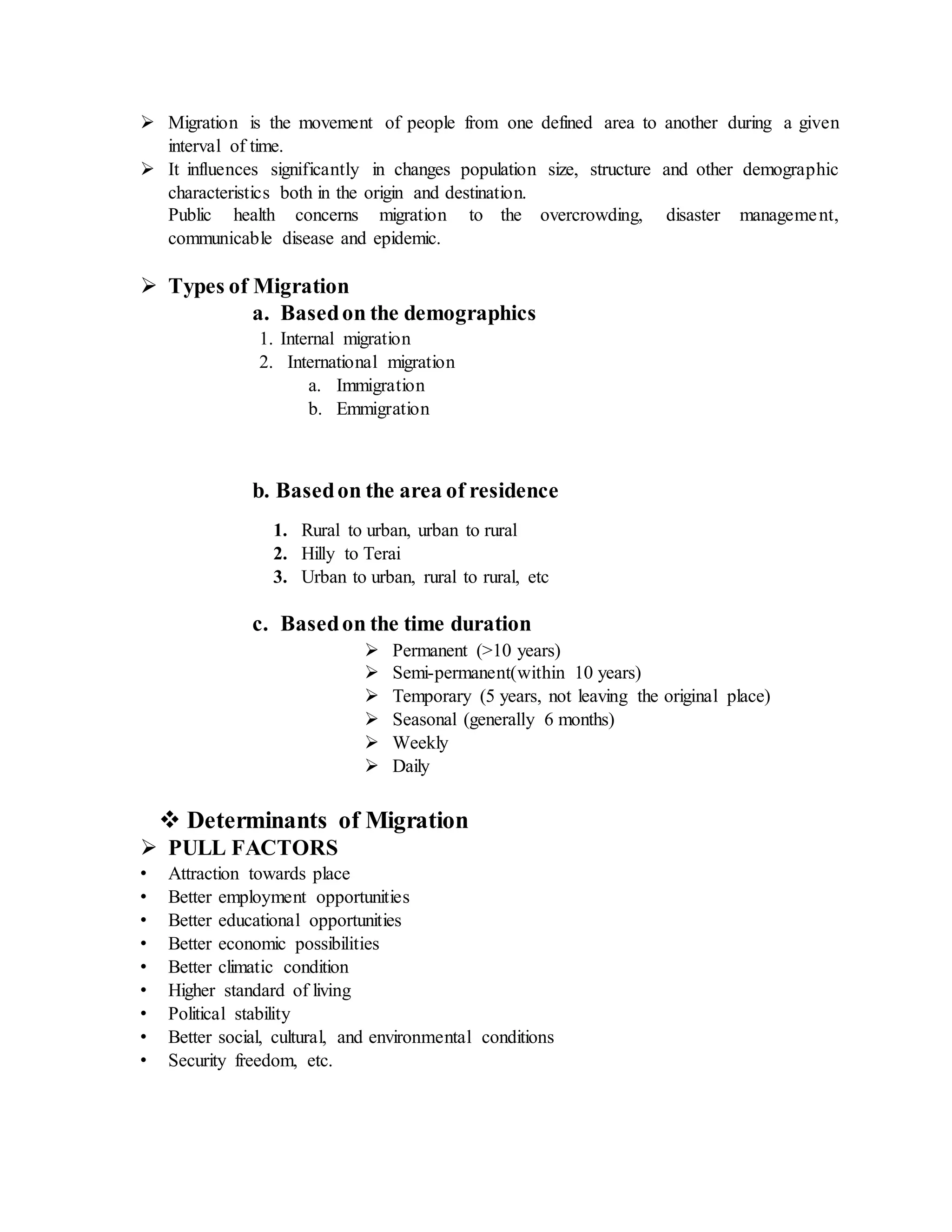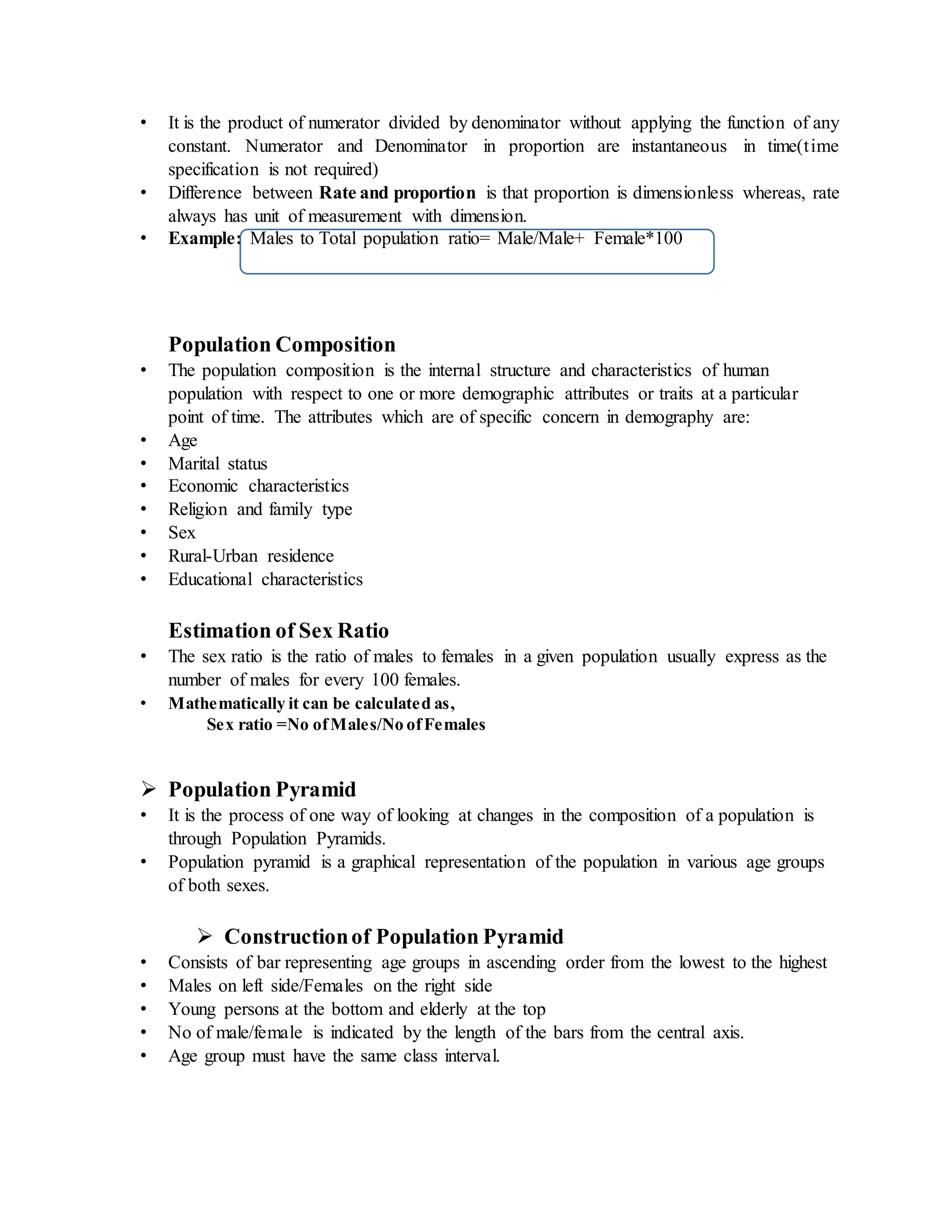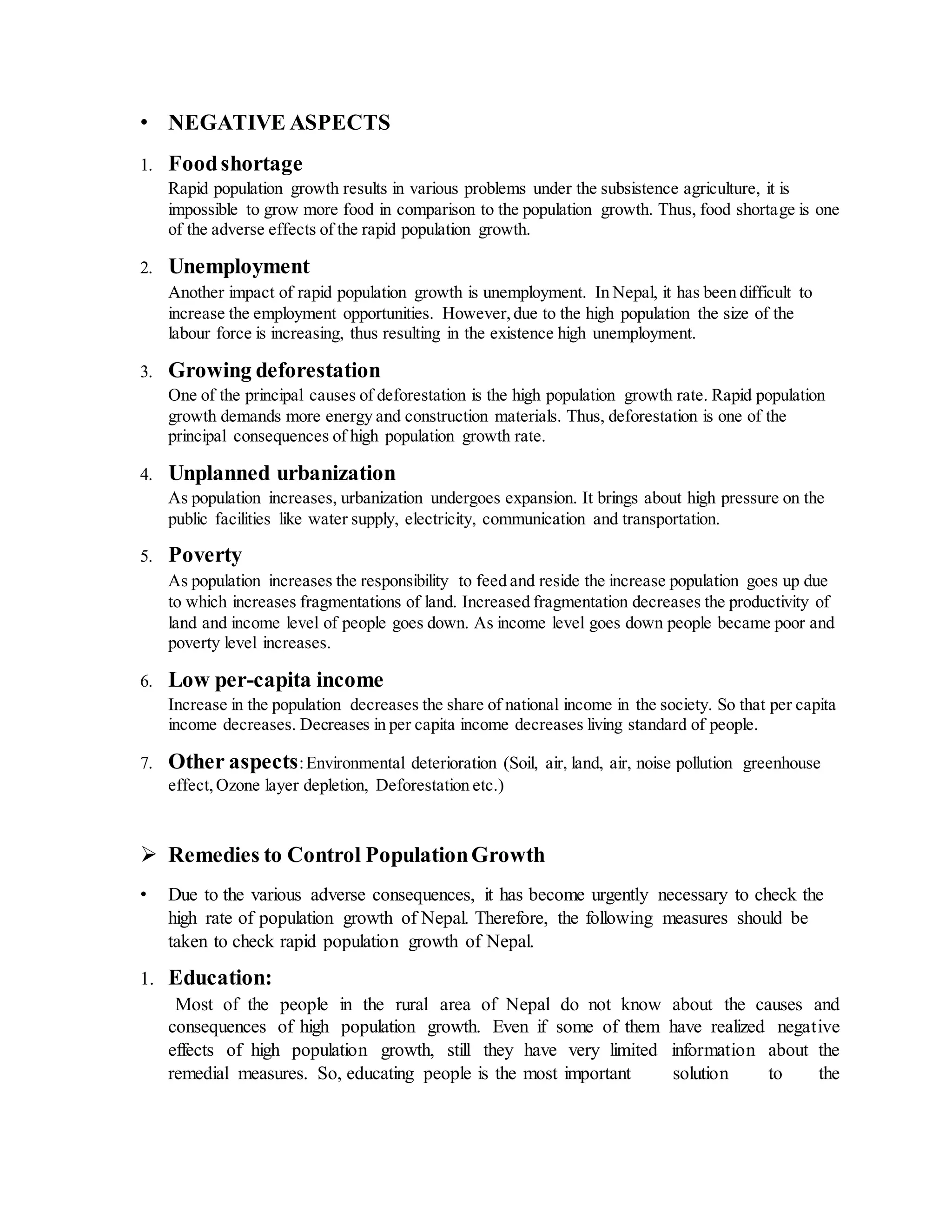This document provides information on demography and population studies. It defines key terms like population, demography, fertility, mortality, and migration. Demography is summarized as the scientific study of human populations, including their size, composition, and distribution over time. It examines population changes through demographic processes like fertility, mortality, migration, marriage, and social mobility. Methods for measuring these processes are also outlined, such as crude birth/death rates.

